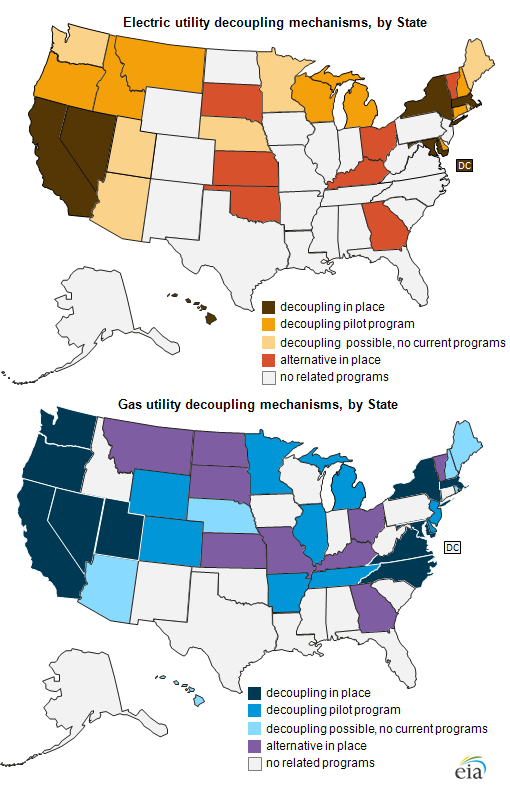
May 5, 2011

Decoupling treatment of electric and gas utilities can differ within a State
Sources: U.S. Energy Information Administration, derived from the American Council for an Energy-Efficient Economy (Oct 2010) and SNL Energy (Regulatory Research Associates, April 2011)
Note: Map colors above are determined by the operation of at least one natural gas or electric utility under the specified rate type. Other utilities in the same State may, but do not necessarily, operate under similar programs. Rate adjustments for variations in demand due to weather only are not included.
Note: Map colors above are determined by the operation of at least one natural gas or electric utility under the specified rate type. Other utilities in the same State may, but do not necessarily, operate under similar programs. Rate adjustments for variations in demand due to weather only are not included.
Today in Energy on May 4, 2011 discussed how utility regulators can use rate design to improve a utility's economic incentive to promote energy efficiency or conservation programs by decoupling a utility's revenue from its sales. However, there are differences in the application of decoupled rates between the electric and gas utilities, even within a single State.
Many States institute decoupled rates for both electric and gas utilities (e.g., California, New York, Massachusetts). Others vary their treatment; for example, Virginia and North Carolina have both decoupled gas rates but not electric rates. Decoupling on the gas side has a longer history and is more established.